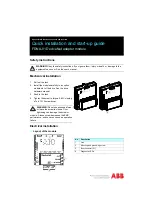
SAMM
User Manual
40
Green
Charts that are loaded are bright green and will be rendered, unless they are disabled. (You
may want to disable a chart, instead of unloading it, to prevent the autoloader from replacing it
in the display.) Green charts were either automatically loaded because they meet the auto
loader's criteria, or they were manually loaded through either
a. the
Manual load...
button, or
b. the
Load
command available on the right-click menu on a chart in the database.
Unless the database has been sorted, the green loaded charts always appear at the top of the
list, in the order of smallest vector first, then higher resolution rasters.
Orange
Orange highlighting is transient. These charts are loading, so the orange indicates that SAMM is
actively loading them to the mosaic window. They will turn green when they are loaded.
Yellow
The yellow charts follow; these are yellow because they
a. don't meet the auto-load criteria but intercept the mosaic window extent or
b. they were manually unloaded using the
Unload
command from the database context
menu.
The yellow charts are within the vicinity of the project, and are available to the autoloader if the
auto load settings are changed. The charts are ordered using the same convention as the green
ones, with vectors covering the smallest area first, then rasters of higher resolution. If the
database is sorted, they will reorder according to the sort but this does not affect the display.
Gray
Hidden charts are highlighted in grey, when they are shown. They are hidden from the auto
loader. You may toggle their display in the chart database on and off from the
Show hidden
charts
checkbox under Display options on the Charts tab.
Manually Loaded vs. Folder Added Chart Behavior
SAMM's chart loader determines how to treat a chart based on how it was loaded. You can
force the manually loaded or folder added behavior using the context menu commands.
SAMM's auto load algorithm either recognizes a chart in the database as suitable for loading, or
it doesn't. If it doesn't recognize the chart, that chart file has either been pinned, so it can be
rendered, or it is hidden, and it cannot be rendered. SAMM automatically pins every chart that
has been loaded manually, either in the basic interface or using the
Manual load...
button in the
advanced interface. You can also pin any chart by right-clicking on it in the database list and
clicking
Pin Loaded Chart
(if the chart is already loaded) or clicking
Load
(to load the chart,
which SAMM then automatically pins), or double-clicking on the chart.
You can hide any chart from the auto load algorithm by right-clicking on it and clicking
Hide
. It
disappears from the database list, but will display if you click the
Show hidden charts
box on
the Charts tab. To reveal these charts to the auto load algorithm, you must right-click on the
hidden chart and click
Unhide
. If you click
Load
on a hidden chart, it will load it and then pin it.
It will still be hidden from the algorithm, but will then be available for rendering.
Содержание SAMM
Страница 9: ...SAMM User Manual 7...
Страница 64: ...SAMM User Manual 62 This page is intentionally left blank...
Страница 73: ...SAMM User Manual 71 This page is intentionally left blank...
Страница 89: ...SAMM User Manual 87 This page is intentionally left blank...
















































